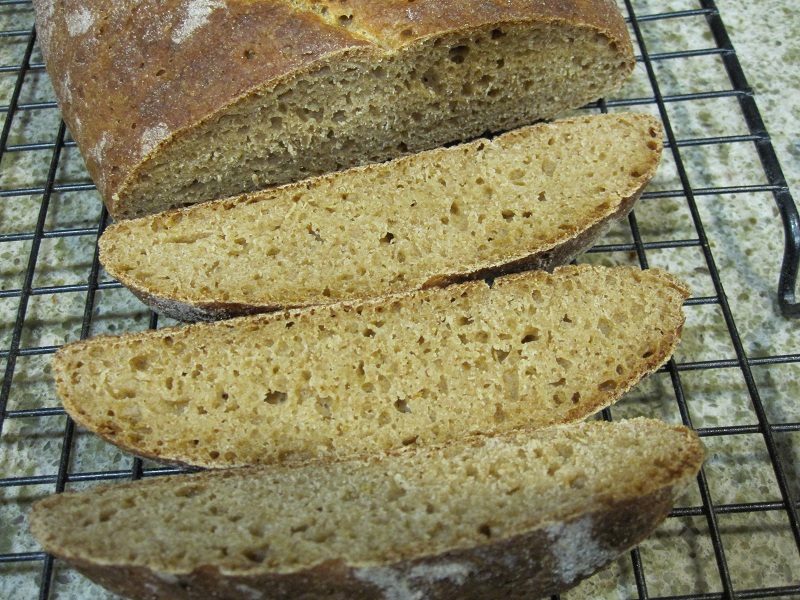I recently got some emmer (farro) flour from bluebirdgrainfarms.com ( link ) and have made 3 loaves with it so far. I got interested in emmer after researching biblical era bread making. This post includes photos of my most recent loaf and a recap of my experience so far with this flour.
For those unfamiliar with emmer, it is an "antique" grain and genetic ancester of modern wheat. I think it was used (along with barley) in Egypt and the middle east until about the time of the Roman conquest but I wasn't there so you'll have to ask the antiquarians about exact dates.
Anyway, I got curious and ordered some emmer flour from the folks at Bulubird Farms.
I've made three yeasted loaves so far with the flour: (1) an artisan loaf, 60% hydration; (2) a pan loaf, 67% hydration; and (3) another artisan loaf, 67% hydration. Each loaf was made using 450g flour, 0.5 tablespoon instant yeast, 0.5 tablespoon salt, and either 300g or 270g water.
This is a low-gluten flour that behaves differently from my usual bread flour. Emmer dough seems stickier than dough made with King Arthur flour and doesn't seem to gain "elasticity" from kneading/mixing. Labeled protein content is almost identical to King Arthur bread flour as is labeled protein content of King Arthur All Purpose flour, which I find confusing. I think 60% hydration is better than 67% to reduce stickyness. Pan loaves should only be baked in a thoroughly greased pan.
The emmer flour is a "whole grain" product that produces a crumb similar in color to regular whole wheat.
The taste of the emmer bread is quite distinctive, sort of "nutty", and I find it tasty and less harsh than whole wheat bread. The emmer flour seems a little coarse and the emmer bread feels vaguely granular in my mouth. Overall I like the bread quite a bit and it might be even better with stuff in it like sugar and raisins and such. The package label has a muffin recipe that might be very nice (if I ate muffins).
One drawback to this flour is the cost. Including shipping it's close to $4/pound!









